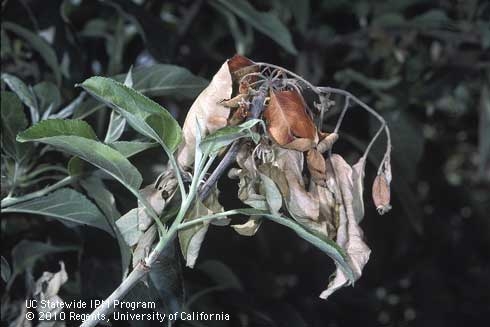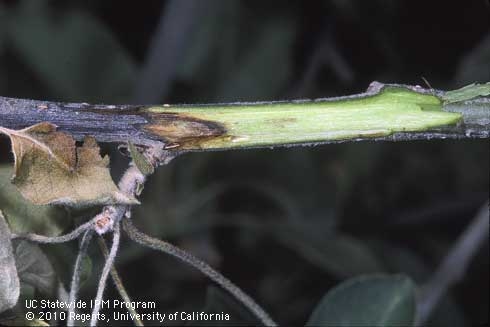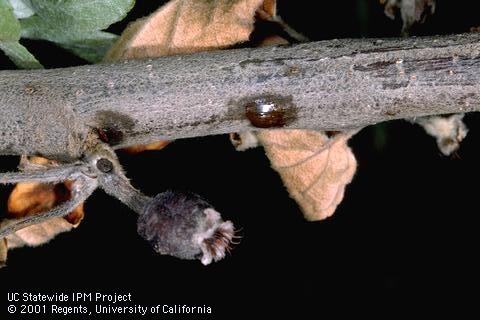
The malady is called fire blight because terminals of affected branches suddenly blacken and die as if they've been scorched by fire (Figure 1). The disease is caused by the bacterium Erwinia amylovora, which commonly enters trees and shrubs through blossoms in rainy weather. Ideal conditions for disease development are rainy or humid weather with mild daytime temperatures (75° to 85°F), especially when night temperatures stay above 55°F.
In late spring or early summer after blossoms are gone, damage symptoms appear on new tree growth. By this time, it is too late to effectively use pesticide sprays. However, summertime is a good time to prune rapidly advancing infections out of trees. Pruning is the only way to remove infections in old wood and is a critical part of a fire blight management program. If you choose to prune in summer, disinfect pruners with a 10% bleach solution to reduce chances of further spreading the disease. [In rainy years wait until all chance of rain has gone.]

When planting new trees, those who live in fire blight-prone areas may wish to consider apple or ornamental pear varieties that are less susceptible; most edible pear varieties are quite susceptible. Varieties of ornamental pear trees that are less susceptible to fire blight are Capitol and Red Spire, while 
For more information about managing fire blight and what to do in the spring, see Pest Notes: Fireblight at http://www.ipm.ucdavis.edu/PMG/PESTNOTES/pn7414.html.
Modified from “Wet Weather Increases Outbreaks of Fire Blight in Apple and Pear Trees” from the Retail Nursery and Garden Center IPM Newsletter, Vol. 3, No. 1, March 2013.
Editor - Associate Director for Urban & Community IPM/ Area Urban IPM Advisor